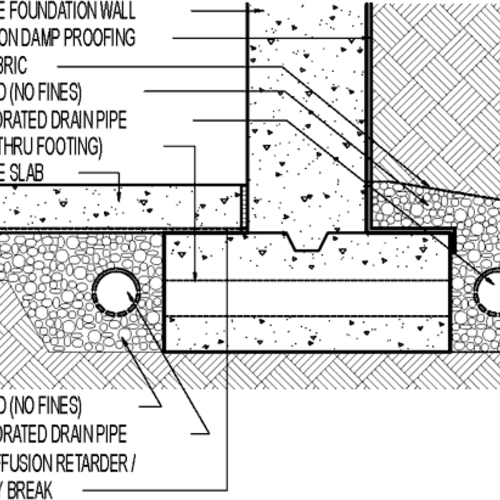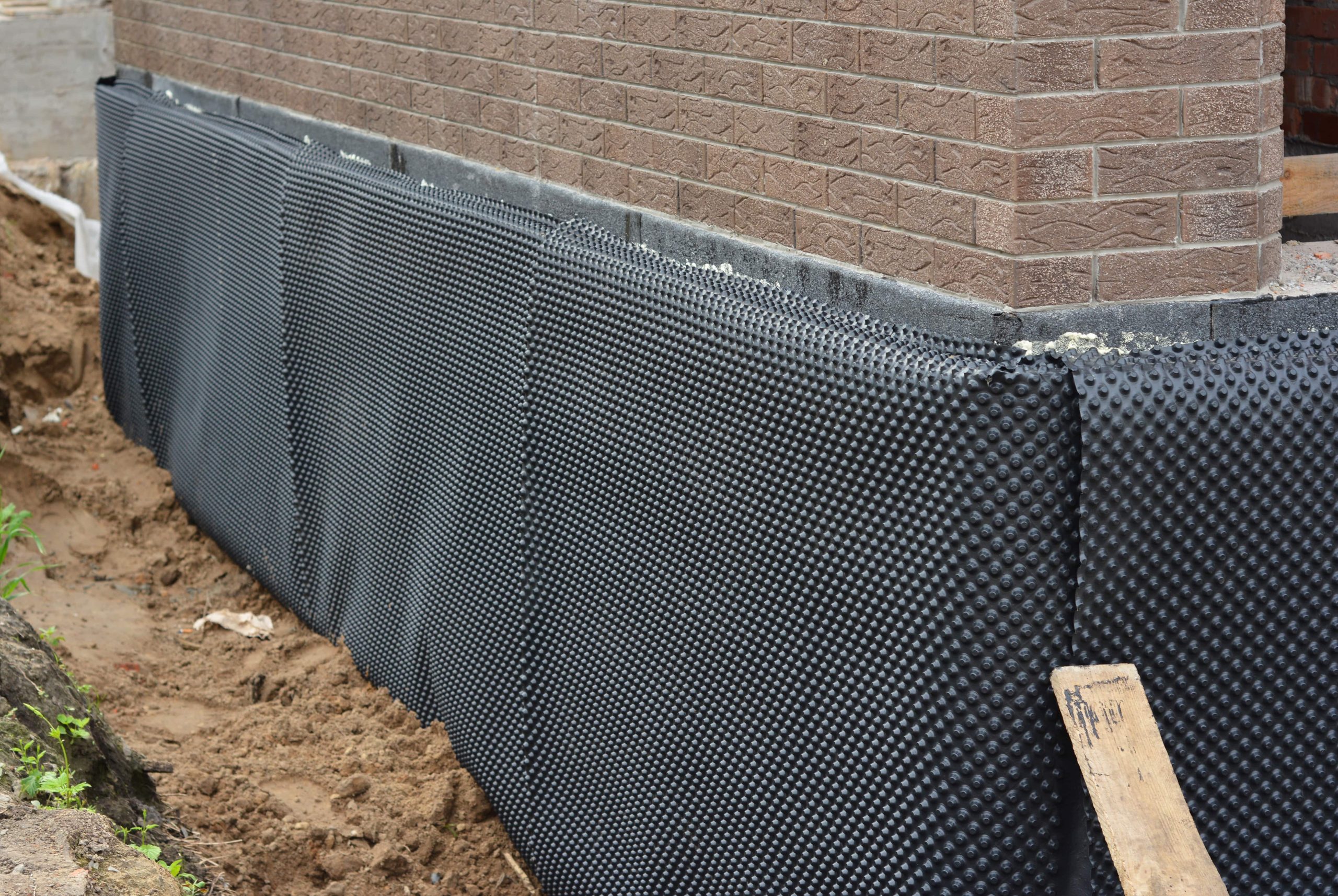7 Proven ways to manage humidity with mould treatment newcastle
7 Proven ways to manage humidity with mould treatment newcastle
Blog Article
Discovering the Various Techniques and Solutions for Effective Damp Proofing
Moisture in structures presents substantial obstacles to both structural honesty and indoor air high quality. Various techniques and solutions have emerged to fight this pervasive issue. From conventional damp-proof membranes to innovative chemical treatments, each approach offers special benefits. Comprehending these choices is crucial for effective wetness control. Nonetheless, choosing the best option depends on specific structure conditions and requirements, prompting further exploration into one of the most efficient moist proofing techniques available.
Recognizing the Root Causes Of Wetness
Although dampness can emerge from various sources, comprehending these reasons is important for efficient removal. Generally, moisture stems from three primary sources: rising damp, permeating wet, and condensation. Rising moist occurs when groundwater travels up-wards via permeable products, such as brick or stone, usually because of an absence of a reliable barrier (damp removal newcastle). Permeating wet is generally created by external variables, consisting of roof covering leakages, defective seamless gutters, or damaged wall surfaces, allowing water to penetrate a residential or commercial property. Condensation, on the other hand, arises from excess dampness in the air, frequently exacerbated by bad ventilation and temperature distinctions, resulting in water droplets creating on surface areas. Determining these underlying concerns is important, as each type of dampness requires a tailored technique for removal. Proper analysis helps in establishing the most effective options, eventually securing the structural integrity of a structure and enhancing indoor air quality
Traditional Damp-Proof Membrane Layers

Chemical Damp-Proofing Solutions
Chemical damp-proofing services use an innovative strategy to stopping moisture breach in buildings. These methods commonly entail the application of liquid chemicals that permeate masonry and form an obstacle against increasing damp. Commonly utilized chemicals consist of silanes, siloxanes, and other water-repellent representatives that react with surface area materials to produce a hydrophobic layer.The application procedure usually calls for drilling openings into the wall surfaces, injecting the chemical solution, and permitting it to heal. This technique is especially beneficial for older structures where standard damp-proof membranes may be not practical. Chemical damp-proofing can be much less turbulent and more cost-efficient than comprehensive remodelling projects.While effective, these solutions depend on proper application and environmental conditions for peak efficiency. damp removal newcastle. Routine maintenance and monitoring are important to ensure the longevity of the damp-proofing treatment. In general, chemical damp-proofing stands for a functional alternative for securing buildings against moisture-related damage
Cavity Wall Construction Techniques
Dental caries wall surface construction techniques offer various advantages, especially in wetness control and energy performance. By integrating an air gap between two layers of masonry, these wall surfaces effectively alleviate water ingress while boosting insulation. This mix not just safeguards frameworks from dampness however likewise adds to minimized energy usage.
Advantages of Tooth Cavity Wall Surfaces
When taking into consideration effective moist proofing methods, the advantages of dental caries walls stick out plainly. Dental caries walls include two different layers, creating an air gap that properly minimizes wetness infiltration. This style reduces the risk of dampness, as the outer wall works as an obstacle against rainfall and water access. In addition, tooth cavity walls enhance thermal insulation, which contributes to energy efficiency by minimizing warm loss. They additionally supply audio insulation, helping to create a quieter interior environment. The air space permits for ventilation, which assists in wetness control and minimizes the chance of mold growth. These benefits not just boost the total comfort of a structure however additionally add to its durability and architectural integrity.
Wetness Control Strategies
Reliable moisture control approaches are important in dental caries wall building and construction to assure long-term protection against dampness. One main method includes the consolidation of weep openings, which promote water drain from the tooth cavity, stopping buildup. In addition, the use of breathable membranes can assist handle dampness degrees while allowing entraped vapor to get away. Correct placement of insulation is also vital, as it must not block drainage courses. Making sure that the outer fallen leaves of the tooth cavity wall surface are constructed with water-resistant products boosts general durability. Normal upkeep checks are vital to determine any obstructions or damages early, safeguarding the framework's honesty. Eventually, a combination of these strategies develops a robust protection versus moisture invasion in tooth cavity wall surfaces.
Insulation and Power Efficiency
Insulation plays a crucial duty in improving energy performance within dental caries wall construction. By incorporating shielding materials, these wall surfaces produce a thermal barrier that minimizes warm loss and decreases energy intake. Efficient insulation not only assists maintain a secure interior temperature but also alleviates the threat of wetness, as it protects against condensation within the wall surface dental caries. Different strategies, such as making use of stiff foam boards or mineral woollen, can be used to attain excellent insulation performance. In addition, proper setup is vital to assure that spaces and gaps are minimized, which can or else jeopardize energy performance. Eventually, a well-insulated cavity wall surface contributes greatly to general sustainability and lowers heating & cooling costs for property owners.
Exterior Damp Proofing Techniques
Outside wet proofing approaches are essential for safeguarding frameworks from wetness seepage. Two reliable strategies consist of the application of water-proof membrane layers and the setup of French drains pipes. These remedies aid mitigate water buildup and protect the stability of structures.
Waterproof Membrane Application
While different approaches exist for preventing moisture access, the application of waterproof membranes continues to be an extremely efficient outside damp proofing method. These membrane layers are typically made from products such as polyethylene, rubber, or customized bitumen, offering a durable barrier versus water penetration. The setup procedure entails applying the membrane to the external surfaces of wall surfaces or foundations, guaranteeing full insurance coverage to stop leaks. Correct attachment and securing at joints are crucial to maximizing performance. Water resistant membranes can be used in various kinds, consisting of fluid coverings and sheet membrane layers, enabling for versatility based upon the specific requirements of the structure. This technique not just secures buildings from moisture however additionally enhances their longevity and architectural stability.
French Drain Setup
One effective technique for handling groundwater and avoiding dampness buildup around a building's structure is the setup of a French drain. This water drainage system contains a trench full of crushed rock and a perforated pipeline that reroutes surface water far from the structure. Appropriate installation requires careful preparation, guaranteeing that the drainpipe inclines away from the structure to help with ideal water circulation. Additionally, the location of the drainpipe is vital; it ought to be positioned in locations vulnerable to merging or excess moisture. Routine upkeep, consisting of cleaning debris from the crushed rock and making certain the pipeline remains unhampered, is vital for long-lasting efficiency. Eventually, a well-installed French drainpipe can greatly decrease the threat of water-related problems in basements and structures.
Inside Waterproofing Methods
Inside waterproofing techniques are vital for safeguarding a building's interior from wetness infiltration and possible water damage. These strategies normally include the application of specific materials and methods made to produce a wetness obstacle within the structure. One typical method is using water-proof finishings or sealants on walls and floorings, which protect against dampness from passing through surfaces.Additionally, installing indoor water drainage systems, such as sump pumps, can efficiently manage water build-up in basements and crawl spaces. One more method includes using vapor barriers, which are set up to hinder wetness activity from the ground into living spaces.Moreover, resolving any splits or spaces in walls or foundations with proper sealers assures a comprehensive defense versus water breach. By executing these interior waterproofing methods, home proprietors can significantly decrease the threat of mold and mildew growth, architectural damage, and various other moisture-related issues. Appropriate execution of these techniques is essential for long-term security and building stability.
Routine Upkeep and Evaluation Practices
Routine upkeep and evaluation practices are crucial for assuring the long-lasting efficiency of moist proofing remedies in any type of structure. Routine checks enable homeowner to identify early indicators of dampness intrusion, such as peeling off paint, mold and mildew growth, and musty smells. These indications can signal underlying concerns that call for immediate attention.Inspections must be carried out at the very least yearly, concentrating on at risk locations like basements, creep rooms, and exterior walls. During these analyses, homeowner should examine sealers, drain systems, and air flow to validate they function correctly.Additionally, maintaining downspouts and rain gutters is essential, as blocked systems can cause water build-up near the foundation. Implementing a regular upkeep routine, in addition to timely repair work, can considerably prolong the life expectancy of moist proofing procedures and safeguard the architectural stability of the building. Positive measures eventually add to the total health and safety of the living atmosphere.
Often Asked Concerns
How Much Time Does Damp Proofing Normally Last?
The period of wet proofing performance differs, typically lasting between 20 to half a century. Factors such as application top quality, environmental conditions, and maintenance practices considerably affect the durability of the moist proofing treatment.

Can I Damp Evidence My Home Myself?
The specific pondered the feasibility of DIY damp proofing. With proper research study and the appropriate materials, it is possible. They also recognized the significance of expert assistance to ensure resilient efficiency and avoid future issues.
What Are the Signs of Ineffective Damp Proofing?
Indicators of inadequate wet proofing consist of consistent musty odors, visible mold and mildew development, peeling paint, damp patches on wall surfaces, and timber decay - damp removal newcastle. Homeowners should attend to these concerns promptly to avoid additional damage and wellness problems
Does Damp Proofing Affect Indoor Air Quality?

How Much Does Specialist Damp Proofing Expense?
Professional damp proofing expenses vary substantially, typically varying from $1,000 to $5,000 depending upon the building's dimension, the degree of the wet problem, and chosen methods. Each situation calls for a tailored evaluation for precise rates. Commonly, dampness stems from 3 primary resources: increasing moist, permeating damp, and condensation. When considering reliable damp here proofing techniques, the benefits of cavity wall surfaces stand out prominently. Exterior damp proofing techniques are crucial for safeguarding structures from dampness seepage. While numerous approaches exist for preventing moisture access, the application of waterproof membranes continues to be a very effective outside wet proofing technique. Signs of inefficient damp proofing include persistent mildewy smells, visible mold growth, peeling off paint, moist patches on wall surfaces, and timber decay.
Report this page